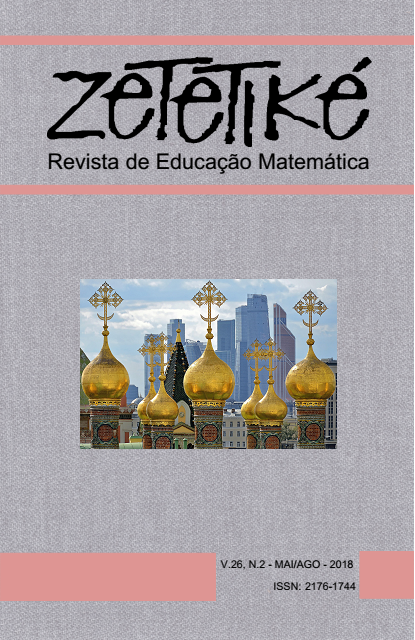Abstract
In this article, we present the results of a research that sought to understand the results in mathematics of
Brazilian students, based on the PISA data. The research conducted involving different stages: exploratory
analysis of PISA 2012 microdata, analysis of the content of public items of Mathematics used in the 2012
assessment and application of these items to a group of 15-year-old students enrolled in the first year of high
school in two public schools. The results evidenced the existence of a significant percentage of Brazilian
students located at the lower levels of the global scale and of the mathematical literacy subscales, which is a
serious situation for about half of our students. The contents of the 56 public items of mathematics analyzed and classified in relation to the specificity of the theme, the context and the requirement requested in its solution.
When applying these items to the group of high school students, we identified that the greatest difficulties
referred to items that involved calculation of area measure, rectangle triangle and Pythagorean Theorem.
References
Bastian, I. V. (2000). O Teorema de Pitágoras. Dissertação de Mestrado em Educação Matemática. São Paulo: Pontifícia Universidade Católica de São Paulo.
Instituto Nacional de Estudos e Pesquisas Educacionais Anísio Teixeira (INEP). (2013). Relatório Nacional PISA 2012: resultados brasileiros. São Paulo: Fundação Santillana/Organização para a Cooperação e Desenvolvimento Econômico (OCDE).
Fonseca, M. C. F. R. (Org.). (2004). Letramento no Brasil: habilidades matemáticas. São Paulo: Global.
Grangeiro, M. G., Couto, A. P. N., & Costa, A. C. (2012). Análise de erros em questões de teorema de Pitágoras: um estudo com alunos do Ensino Fundamental. Trabalho apresentado no XII Encontro Nacional de Educação Matemática. (ISSN 2178-034X). Disponível em: http://www.sbem.com.br/enem2016/anais/pdf/5481_4329_ID.pdf. Acesso em 12 de novembro, 2013.
Kleiman, A. (Org.). (1995). Os significados do letramento. Campinas: Mercados de Letras.
Mottin, E. A. (2004). Utilização de material didático-pedagógico em ateliês de matemática para o estudo de Teorema de Pitágoras. 2004. Dissertação de Mestrado em Ciências e Matemática. Porto Alegre: Pontifícia Universidade Católica do Rio Grande do Sul.
Organization for Economic Co-Operation and Development (OECD). (2013). Education at a Glance 2013 OECD indicators. OECD Publishing.
Organization for Economic Co-Operation and Development (OECD). (2016). PISA 2015 Assessment and Analytical Framework. Paris: OECD Publishing.
Soares, M B. (2004). Letramento e alfabetização: as muitas facetas. Revista Brasileira de Educação, Rio de Janeiro, (25), 5-17.
Soares, M. B. (1998). Letramento, um tema em três gêneros. Belo Horizonte: Autêntica.
Soares, M. (1999). Letramento: um tema em três gêneros. São Paulo: Autêntica.
Street, B. (1984). Literacy in theory and practice. Cambridge: Cambridge University Press.
Tashima, M. M., & Silva, A. L. (2015). As lacunas no ensino-aprendizagem da Geometria. Retirado em 18 de novembro, 2015, de: http://www.gestaoescolar.diaadia.pr.gov.br/arquivos/File/producoes_pde/artigo_marina_mass aco_tashima.pdf.

This work is licensed under a Creative Commons Attribution-NonCommercial-NoDerivatives 4.0 International License.
Copyright (c) 2018 Zetetike


